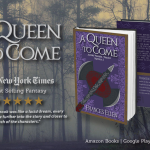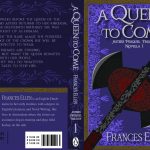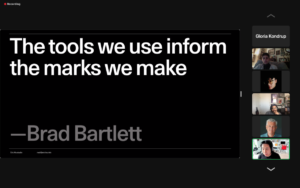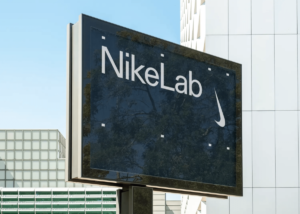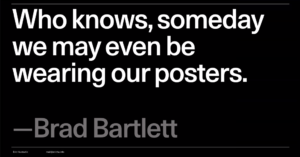The name of the webinar I went to simply, “Eric Hu – SP22 Design Speaker Series.” The speaker was Eric Hu himself and the sponsors were the Los Angeles ArtCenter Graphic Design and the Hoffmitz Miklen Center of Typography (HMCT).
The event was advertised on HMCT’s online events page on their website: https://hmctartcenter.org/events/sp22-design-speaker-series/
After the event ended, there was no follow-up email, but I do not think that was the point of the event. This eve was mostly advertised to the two sponsored associations and school members and students.
Other links are provided before, during, and after the event:
Eric Hu: https://erichu.info/
ArtCenter: https://www.artcenter.edu/
HMCT: https://hmctartcenter.org/
Eric Hu is a LA local multidisciplinary graphic designer with his major interests being in typography and digital media. It has been 11 years since Hu graduated from ArtCenter, but he still looks back at what he learned fondly and found the skills he developed there invaluable. He found himself having a hard time focusing on one kind of design, wanting to have his hand in many different forms of media. His love of type, messaging, communication, and image-making came from the posters, signage, and graffiti of his local hometown with a multicultural community influencing the typography and graphic symbols.
His interest in print, motion, interactive, and image-making became growing anxiety for him as he studied due to the push to pick one and focus on it. But now looking back he found picking one was not necessary for him, he said yes to everything and experimented. In his studies of lettering and typography, he was also taught about transmedia design, which was still new and developing in the industry. Transmedia Design is a design holistic approach and thought, but can also be medium-specific. A design that can move from different channels of media and mediums in a thoughtful and well-developed approach is the core of transmedia design thought. This leads him to wonder if there is a way to merge to start experimenting with the physical and digital work. “Can we create a book that plays videos?” Well, Hu tried that with projections onto physical books that when the area of the project was tapped by a finger would play. “Can you code a video to only play when you move?” He created just that, a video that would only play if you were walking and paused whenever you stopped. This is where a quote by his former professor, Brad Bartlett, was displayed, “the tools we use inform the marks we make,” and he admitted he did not understand what he meant at the time but came to understand it after he worked in the industry for years and delved deeper into the transmedia design.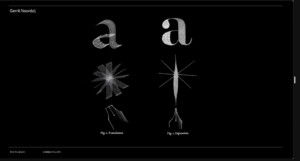 Many of the things that Hu learned in terms of technology has changed drastically within the 11 years that he has been working in the field. But the fundamentals have stayed the same and informed his design decisions. But some things he picked up were how typography and lettering evolved over time based on the tools we used to write it:
Many of the things that Hu learned in terms of technology has changed drastically within the 11 years that he has been working in the field. But the fundamentals have stayed the same and informed his design decisions. But some things he picked up were how typography and lettering evolved over time based on the tools we used to write it:
- Chinese characters using brush strokes.
- Greek and Roman letters etched in stone.
The letters and characters’ appearance is dictated by the tools used. As technology evolves there are more evolutions of typography, especially in the digital age. Like cutting the decorative serifs since they are too time-consuming to write, and makes the letter look cleaner and easier to write. The tools and substrate both dictate how something is written. For instance, some lettering affected by substrate examples are:
- Illuminated manuscripts writing with feather quills and hollow sticks onto leather skin.
- Graffiti bubble lettering was created because it’s hard to paint with spray paint and make some of the traditional characters.
- The pixelated font used in DOS needed simplified letters for the limited graphics.
Due to the digital age, we do not have substrate awareness. Hu wanted people to understand that they were looking at a design so he immersed himself in ways to make that connection between the digital and the tangible. When working with Nike, He designed their Nike LAB logo and branding. Nike LAB is an experimental brand and artist collaborating sports fashion designing workshop. Hu wanted a design that could be applied to every piece of media and substrain. He also wanted the design to be flexible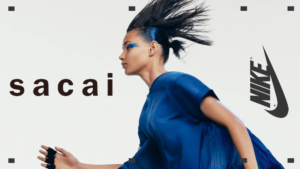 since this isn’t a purely Nike design, it needed to be able to accommodate other brands and their personalities. The other brands are the stars and need to be highlighted but Nike needs to also be visible and not fade into the background. Nike was not lost in the design and the other collaborators got to play with the formate in many ways to match their personalities.
since this isn’t a purely Nike design, it needed to be able to accommodate other brands and their personalities. The other brands are the stars and need to be highlighted but Nike needs to also be visible and not fade into the background. Nike was not lost in the design and the other collaborators got to play with the formate in many ways to match their personalities.
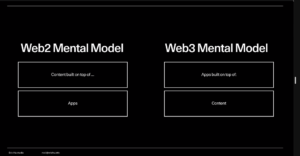 Hu argued that we are now in a new age of design. No longer should we be modern but “hypermodern” where context and form are inseparable, unlike the past design movements. Context is the medium used and the form is its shape and visual representation. The screen is not tangible but that does not mean we cannot own what is not material. After all digital code is now a substrate. We write it and it has a visual output. Creating images and digital substrates that feel tangible is a challenge that Hu is actively working on. He became very interested in NFTs due to their potential to change the market in the future. Although these artistic collectible stock options may seem like a waste of money to some now, that does not mean that they will not evolve into something more tangible in the future. People are trying to make designs for the digital world where NFTs play a huge role in these transitions and even allow you access to rare or exclusive items. This is more applicable to Virtual Reality (VR) but is similar in concept to microtransactions within video games. Not only do you buy clothes for your real body, but your virtual one as well, using these NFTs and brand exclusives in collaboration with people creating using this form and context. In this projected scenario, transmedia becomes hypermedia. This is what he learned about designing for Nike LAB and studying and understanding the potential for digital tangibility through NFTs or something like it in the future.
Hu argued that we are now in a new age of design. No longer should we be modern but “hypermodern” where context and form are inseparable, unlike the past design movements. Context is the medium used and the form is its shape and visual representation. The screen is not tangible but that does not mean we cannot own what is not material. After all digital code is now a substrate. We write it and it has a visual output. Creating images and digital substrates that feel tangible is a challenge that Hu is actively working on. He became very interested in NFTs due to their potential to change the market in the future. Although these artistic collectible stock options may seem like a waste of money to some now, that does not mean that they will not evolve into something more tangible in the future. People are trying to make designs for the digital world where NFTs play a huge role in these transitions and even allow you access to rare or exclusive items. This is more applicable to Virtual Reality (VR) but is similar in concept to microtransactions within video games. Not only do you buy clothes for your real body, but your virtual one as well, using these NFTs and brand exclusives in collaboration with people creating using this form and context. In this projected scenario, transmedia becomes hypermedia. This is what he learned about designing for Nike LAB and studying and understanding the potential for digital tangibility through NFTs or something like it in the future.
“There are images & words, typography exists between he two”
Eric Hu
The examination of Hu’s work, knowledge, and experience throughout his career made me realize how important it is to understand why the visual and tangible world has dictated many things in creation. It is always important to observe and ask why things are they are or how they became like that. Studying the methods, tools, and substrates in which a mark is created is crucial in understanding its form. Things are changing rapidly and technology from today will be very different within 10 years. We need to understand the fundamentals of visual language and of designing for a particular purpose. Without that, we cannot as designers cannot shape the “pronouns” of visual language. At the end of the day, keeping up with technology is not what makes up obsolete, in fact, technology needs to keep up with us, we are the force that drives it and we use this tool to create our marks.
